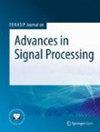Tracking of moving human in different overlapping cameras using Kalman filter optimized
IF 1.9
4区 工程技术
Q3 ENGINEERING, ELECTRICAL & ELECTRONIC
Eurasip Journal on Advances in Signal Processing
Pub Date : 2023-11-06
DOI:10.1186/s13634-023-01078-z
引用次数: 0
Abstract
Abstract Tracking objects is a crucial problem in image processing and machine vision, involving the representation of position changes of an object and following it in a sequence of video images. Though it has a history in military applications, tracking has become increasingly important since the 1980s due to its wide-ranging applications in different areas. This study focuses on tracking moving objects with human identity and identifying individuals through their appearance, using an Artificial Neural Network (ANN) classification algorithm. The Kalman filter is an important tool in this process, as it can predict the movement trajectory and estimate the position of moving objects. The tracking error is reduced by weighting the filter using a fuzzy logic algorithm for each moving human. After tracking people, they are identified using the features extracted from the histogram of images by ANN. However, there are various challenges in implementing this method, which can be addressed by using Genetic Algorithm (GA) for feature selection. The simulations in this study aim to evaluate the convergence rate and estimation error of the filter. The results show that the proposed method achieves better results than other similar methods in tracking position in three different datasets. Moreover, the proposed method performs 8% better on average than other similar algorithms in night vision, cloud vision, and daylight vision situations.利用优化的卡尔曼滤波对不同重叠摄像机中的运动人进行跟踪
对象跟踪是图像处理和机器视觉中的一个关键问题,涉及到对象位置变化的表示和在一系列视频图像中的跟踪。虽然它在军事应用方面有着悠久的历史,但自20世纪80年代以来,由于它在不同领域的广泛应用,它变得越来越重要。本研究的重点是跟踪具有人类身份的运动物体,并通过其外观识别个体,使用人工神经网络(ANN)分类算法。在这个过程中,卡尔曼滤波是一个重要的工具,因为它可以预测运动轨迹和估计运动物体的位置。利用模糊逻辑算法对每个移动的人进行加权,减小跟踪误差。在跟踪人之后,利用人工神经网络从图像的直方图中提取的特征来识别他们。然而,在实现该方法时存在各种挑战,可以通过使用遗传算法(GA)进行特征选择来解决。本研究的仿真目的是评估该滤波器的收敛速度和估计误差。结果表明,该方法在三种不同数据集的位置跟踪效果优于其他类似方法。此外,在夜视、云视和日光视情况下,该方法比其他类似算法的平均性能提高8%。
本文章由计算机程序翻译,如有差异,请以英文原文为准。
求助全文
约1分钟内获得全文
求助全文
来源期刊

Eurasip Journal on Advances in Signal Processing
ENGINEERING, ELECTRICAL & ELECTRONIC-
CiteScore
3.40
自引率
10.50%
发文量
109
审稿时长
3-8 weeks
期刊介绍:
The aim of the EURASIP Journal on Advances in Signal Processing is to highlight the theoretical and practical aspects of signal processing in new and emerging technologies. The journal is directed as much at the practicing engineer as at the academic researcher. Authors of articles with novel contributions to the theory and/or practice of signal processing are welcome to submit their articles for consideration.
 求助内容:
求助内容: 应助结果提醒方式:
应助结果提醒方式:


